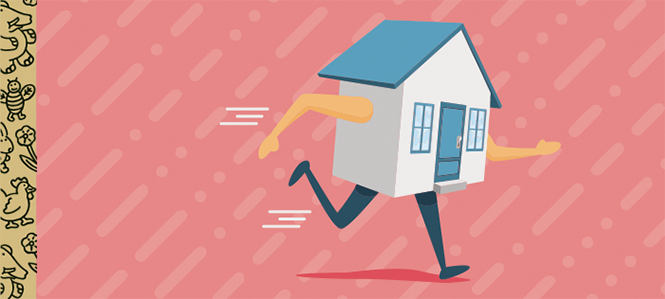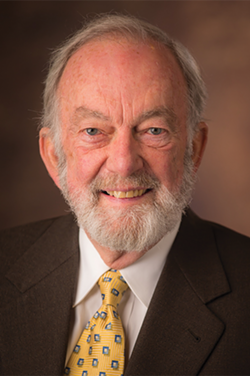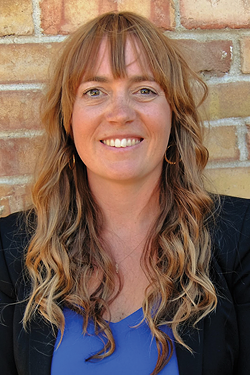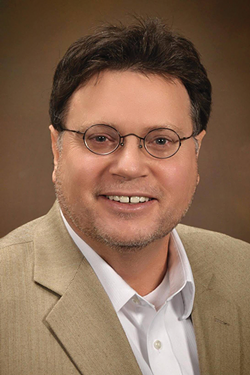Have you ever heard the one about a powerful Utah Republican pushing tens of millions of dollars in government funding to help the poorest of the poor?
No one has. But that could change in 2022.
After years festering below the surface, homelessness and a deepening housing crisis have exploded into public view, forcing even lifelong conservatives to contemplate backing major social investments to attack the problem.
Several key opportunities are emerging in the coming months. The first would subsidize the building of new apartments and homes, not just for middle-income earners like teachers and police officers, but also for the poorest, most vulnerable Utahns. That proposal, led by an influential former state senator, seeks to invest $200 million of federal COVID aid into affordable housing and is generating praise from housing advocates ahead of the 2022 legislative session.
A second window may also be opening to give cities and counties tools to require that developers offer affordable units in their apartment complexes, via a controversial policy tool known as "inclusionary zoning." Such policies ensure that as new buildings go up, so do the numbers of affordable homes.
Progress, though, is far from assured, despite the breadth of the crisis and a one-time opportunity to invest precious federal dollars. The governor and state Legislature might yet again disappoint by slashing or ignoring the requests for new housing investments. Or worse yet, they could react by banning inclusionary zoning for good and crippling cities' efforts to spur affordable housing.
Still, Salt Lake City Mayor Erin Mendenhall is hopeful the state government will rise to the occasion and help battle the housing crisis.
"It would be the biggest step the state has ever taken to address affordable housing and permanent supportive housing," she said of several proposals likely to face votes next year.
Boots on the Ground
Utah's unlikely champion for new public spending is former Senate President Wayne Niederhauser, who was appointed state homeless services coordinator by Gov. Spencer Cox in April. After six months on the job, housing advocates say they've been impressed by Niederhauser, whom they credit with bringing an open mind and fresh energy to the issue.
Niederhauser has not only made it his mission to talk to experts, developers and service providers but also to hear directly from Utahns who are unhoused. On many Friday nights, he can be found doing outreach among homeless people in Sugar House. "I've spent a significant amount of time in the encampments," he said. "I've gotten the opportunity to know some people very well, to listen to their story, to understand their situation."
The Sandy Republican now talks like a grizzled social worker about "people who have experienced deep trauma," of "lifetimes of abuse," and about "intergenerational poverty." Returning these Utahns to healthier lives, Niederhauser has become convinced, requires not just housing but intensive services—so-called "supportive housing."
"If we can connect them with appropriate services, we can get people back to healthier lifestyles and we can keep them in housing," he said. "If we don't deal with the root problems, we end up in this 'spin cycle' of homelessness."
The former senator's rapid education on these issues has led him to back significant new investments. Niederhauser made a bold request for $100 million during a September meeting of the Commission on Housing Affordability, seeking a one-time allocation of federal COVID relief dollars for permanent, supportive housing.
To be approved, that money—plus potentially another $100 million to subsidize new apartments for moderate-income Utahns, often called "workforce housing"—would first need to be included in Gov. Cox's spending recommendations. From there, Niederhauser and supporters must convince members of the Legislature during next year's general session—as lawmakers are under no obligation to accept or even consider Cox's budget.
Political observers say Niederhauser—the senate president for six years until declining to seek re-election in 2018—could make a critical difference in securing funding.
"People sit up and take notice when he backs a specific proposal like this," said Cameron Diehl, executive director of the Utah League of Cities and Towns, who added that Niederhauser is "tremendously credible" on Capitol Hill.
'On the Edge of Homelessness'
Utah's current housing situation is terrible—not just for the poor, but for working class- and middle-income families. Perhaps most depressingly, during the current construction market, Utah failed to gain significant numbers of affordable units built even for moderate wage earners.
The cost to buy a home in Utah has shot up from an average of $221,775 a decade ago to $460,000 today. The numbers are even more cartoonish in Salt Lake County, where the average home now sells for more than half a million dollars, according to the Kem C. Gardner Policy Institute.
In just the past year—during a pandemic—single-family home prices skyrocketed by nearly 30% in Salt Lake City. That's not even the biggest jump in the state. Prices went up 42% in Layton, 36% in Lehi and 35% in Logan. Someone should check on Loa and Lyman.
Rents statewide have jumped, too, as the problems feed off each other—if buying a home is out of reach, newcomers end up renting, driving up demand and prices. A decade ago inn Salt Lake City, the average apartment rented for $754. Five years ago, average rent was $949. And in 2021, according to data from CBRE and Cushman & Wakefield, the average rent is now $1,301.
Utah's housing crunch is felt at all income levels. It's not easy to find a place to live if your family of four has a household income of $92,900 in Salt Lake City (the current "area median income," according to federal stats) but it's damned near impossible if your income is half that or less.
James Wood, a housing expert with the Gardner institute, estimates that there are at least 40,000 households statewide, or 100,000 Utahns, who receive no rental assistance—no vouchers, no subsidized apartments—but who are extremely low income, with an annual income under $28,000 for a family of four. "It's a crisis for those families," Wood noted. "These are people on the edge of homelessness."
Developers like to spin Utah's current problem as simply a supply shortage: Build tons of new housing—with as few regulations as possible, natch—demand will come down, and prices will follow. But a body of research shows that even thousands and thousands of new market-rate units won't fix a housing situation this bleak. The shortages are simply too severe; the gaps too wide.
In fact, sometimes building more apartments can make the problem worse. If a developer tears down two homes that housed working-class families and replaces them with 16 market-rate units, the supply of housing increases but it's hard to argue that affordability and availability has been served.
For decades, new apartments in Utah rented at reasonable prices thanks to incentives, especially the federal Low Income Housing Tax Credit. There wasn't huge demand for market-rate rental housing, so developers relied on those programs to turn a profit. Approximately 25,000 of the nearly 77,000 apartments built between 1987 and 2017 had some degree of enforced affordability, according to a 2018 report from the Gardner Institute.
"People don't realize how critically important the tax-credit program has been," said Wood, who led the team behind that report. He said those units, on average, have rents 15 to 20 percent below market-rate rents. Not cheap, exactly, but within reach of working families.
But in recent years, with a red-hot market, the proportion of new apartments that Utahns can afford has dropped sharply. As Wasatch Front rents skyrocketed, developers no longer needed subsidies to make their complexes profitable. When there is plenty of demand for space at Brooklyn and Berkeley prices, Big Apartment doesn't need to go begging for a loan guarantee or tax credit.
Advocates bemoan all the huge apartment buildings rising with no units that working-class families can afford. Utah Housing Coalition executive director Tara Rollins described the construction and leasing trends as a "missed opportunity," while other advocates paint the dynamic as an outright mistake.
"When you build 400 units, and none are affordable, that's a failure of public policy," says Steve Erickson, a longtime lobbyist for low-income housing nonprofits.
City officials, like Community and Neighborhoods policy director Angela Price, readily acknowledge these challenges. "All these market-rate units are coming online and we aren't getting nearly enough affordable housing," she said.
But one problem municipal leaders point to is a lack of sufficient resources to dangle in front of developers and incentivize more affordable units. "We're running out of carrots," says Mendenhall. "We need to take stronger steps. We need new tools."
Rules and Tools
City officials across the state encourage developers to offer some of their apartment stock at moderate rates, but in only a few spots are they able to make developers do it. One tool that gives local governments leverage, as mentioned earlier, is inclusionary zoning—local ordinances that require builders of projects that meet certain criteria—above a certain size, usually—to include affordable units.
In some forms of inclusionary zoning, developers can either build those units on-site, or pay into a fund that supports their construction elsewhere.
Inclusionary zoning has boosted affordable housing from California to Massachusetts. Since 2000, Boston's inclusionary zoning policy has led to more than 4,000 units of affordable housing. Any project of more than 10 units that requires zoning changes or city financing is obligated to make sure that 13% of its units are affordable.
In Boston, says the city's housing policy manager Michelle McCarthy, the program works best for middle-income households. "[It] serves those who don't qualify for subsidies but who can't afford something on the open market," she said. That niche has also become known as "workforce housing," apartments and homes for a city's nurses, teachers and cops.
State law in Utah neither explicitly bans nor encourages inclusionary zoning. That has made some cities, like Salt Lake, hesitant to adopt tough ordinances, which might then face court challenges or be slapped down by the state Legislature. But a few parts of the state charged forward with their own programs anyway.
Park City has had an inclusionary zoning ordinance since the early 1990s. It was toughened in 1999 and now is triggered when developers want to build any housing or commercial projects greater than 20,000 square feet.
The policy has resulted in more than 400 affordable units, says the city's housing development manager Jason Glidden. He added that with current projects in the pipeline, the city expects "many more units will be produced in the coming years."
Summit County has a similar ordinance, strengthened in 2012. It requires that 20% of new residential developments that meet certain criteria be set aside for low- and moderate-income renters, according to Jeffrey Jones, economic development director for Summit County.
The requirement covers a relatively small portion of the county—most of Summit's incorporated cities and towns have their own rules—but has so far resulted in 330 affordable units in the Silver Creek Village development, and another 160 units of workforce housing near Canyons Village at Park City.
"It has worked well," says Jones. "This affordable housing is not just around for five or 10 years, but for 60."
Next year, for good or for bad, the state Legislature will take a new look at inclusionary zoning. Draft legislation is circulating among key stakeholders such as the League of Cities and Towns and Ivory Development President Chris Gamvroulas. Advocates are hopeful that a bill will allow policies like those in Park City and Summit County to stay in place, while also giving cities like Salt Lake confidence to move forward with their own requirements.
Backers of inclusionary policies are optimistic, but they also know that legislation could take the state backward, even gutting the requirements that currently exist. Listen to Gamvroulas, a key player on these issues up at the Capitol, and such worries seem warranted—he described the inclusionary zoning approach as "inefficient" and a "tax" on residential developers that will drive costs higher.
City and county officials are concerned. "I would hope that places like Summit County and Park City and other communities that utilize inclusionary zoning would have an opportunity to come forward and talk about how it actually works and who has benefitted from it," says Jones of Summit County.
Gamvroulas, whose company helps build affordable housing like a recent workforce housing development in South Jordan, is openly skeptical about inclusionary zoning. He says it's "been objectively a failure, in terms of creating meaningful affordable housing." His bar for success is quite high, though. Few advocates argue that such policies are a silver bullet for creating significant numbers of housing units for the poorest residents; most, like Boston, target middle-income renters.
Conservative lawmakers treat any mandates from cities as suspect. And during the 2021 legislative session, one housing bill included language that would have banned municipalities from enacting inclusionary zoning, before it was stripped out.
Lobbyist Steve Erickson did a study for Salt Lake City in 2016 examining inclusionary zoning. Today, looking back, he wishes a strong bill would have passed. (No bill was drafted, let alone voted on.) He says it could have made a significant difference just as new rental construction in the city was poised to explode. In an apartment market overflowing with profit, developers will still move forward with projects even if they have to sacrifice a few dollars to build some affordable units.
"We should have taken advantage of all this housing being built," Erickson said. "Someday, it will taper off. And that won't be a good time to require inclusionary zoning."
Revolving Doors
Advocates have seen Salt Lake City almost take action on affordable housing before. But as so often happens in Utah, they say the city backs off after being told that if they stick their neck out, they will get slapped down by a Legislature that loathes progressive measures even more than it loves local control.
For example, around the year 2000, Erickson helped write an ordinance that required developers who wanted to tear down existing affordable housing to build new units, or to pay into a fund to replace them. But a city attorney said it might violate state law, so the measure never even saw a vote, let alone a court challenge.
It begs a regular question here in Utah—relevant to everything from clean air to health care: Do progressive policies fail because of the big, bad conservatives up on the Hill? Or because the state's urban leaders won't fight for bold measures?
One problem, observers say, is frequent change in mayors and city council members. Elected officials take a few years to claw their way to clarity on a complex issue like affordable housing. By the time they get a proposal vetted, some leave office. Momentum is lost, and the whole cycle repeats again.
Housing appears to be a more consistent focus of the current Salt Lake City administration, however. Officials tout the city's investment of more than $67 million over the past five years through the Redevelopment Agency (RDA), which has led to more than 3,000 units of housing with some degree of guaranteed affordability.
Thanks to the first round of federal COVID-19 relief—namely the American Rescue Plan Act (ARPA)—the city has new resources. In September, it released $8 million in housing funding, followed by an announcement several weeks later of $4 million in ARPA funding for a new city endeavor—the Westside Community Land Initiative—through which the RDA will acquire land and property to guarantee affordability.
The RDA has received some flak in the past for focusing too much of its resources on units that are affordable only to middle-income renters, rather than "deeply" affordable units that are most in need. RDA Director Danny Walz says the agency is shifting its focus to do as much of the latter as possible, even though those units require the most subsidy.
The city next year will get the results of a gentrification study, being conducted by a Berkeley planning firm. "We are looking at every single possible policy out there," Price said. One possibility is a bill like the one that Erickson worked on years ago, requiring developers to replace any affordable units they tear down.
An Everyone Issue
Funding and new tools are critical, but so is political will. Everyone from developers to advocates to officials acknowledge the role that so-called NIMBYism ("Not In My Backyard!") can play in deterring affordable development. Residents catch wind of proposals to house poor people nearby and often react by rallying to stop them.
Even if they fail, NIMBY efforts slow projects down and force costs upward, leaving bad tastes in the mouths of controversy-averse politicians.
Gamvroulas says that regardless of how new affordable housing gets built, via subsidy or mandate, officials will "have to have the political courage to approve it in a neighborhood, to ignore the signs, the petitions and the letters to the editor."
The Cox administration is currently considering the proposal moved forward by Niederhauser. It includes a one-time expenditure of $100 million for the "deeply affordable" supportive housing that the former senate president is convinced the state needs. He said one possible approach is to use the funding to convert facilities like motels into supportive housing as well as working with existing buildings can offer the biggest bang for the buck.
The proposal also includes another $100 million for traditional workforce housing, similar to what the city RDA wields—subsidies to help build apartments for households making no more than 60% of the average local incomes, or about $55,000 for a family of four.
Niederhauser describes himself as "anxious, but optimistic" about the $200 million request. But he acknowledges it might get trimmed either by Cox's budgeting process or by the Legislature. "We're just crossing our fingers," he said. "We can use every dollar they'll give us."
Mendenhall, too, is wary, but hopeful that the capital city in the fastest-growing state in the country will finally get the money and tools it needs to make a real difference. She and others say that housing has finally become an "everyone" issue in Utah, as legislators from across the state hear their neighbors, their children and their grandchildren complaining they can't find a place to live.
"No matter where you are on the political spectrum, everyone wants their kids to be able to live here, to live near them, to find an affordable home, to participate in our economy, to have stability and happiness," she said.
More by Matt Pacenza
-
Major League Baseball in Salt Lake City is pitched as a home run, but...
Curve Ball
- May 3, 2023
-
Survive Utah's Holiday Shopping Season With the City Weekly Gift Guide
Our tips for finding atypical gifts, unique experiences and Salt Lake essentials to get you and yours through the long, dark winter.
- Dec 7, 2022
-
Pac in, Pac out
University of Utah Athletics faces an uncertain future after a rocky first decade in the Pac-12 conference.
- Jul 27, 2022
- More »
Latest in Cover Story
Readers also liked…
-
Forget the family pedigree—Robert F. Kennedy Jr should not be the next president of the United States
Trojan Horse
- Jun 21, 2023
-
Women decry harassment and toxic culture at St. George auto dealership
Men at Work
- Oct 11, 2023








